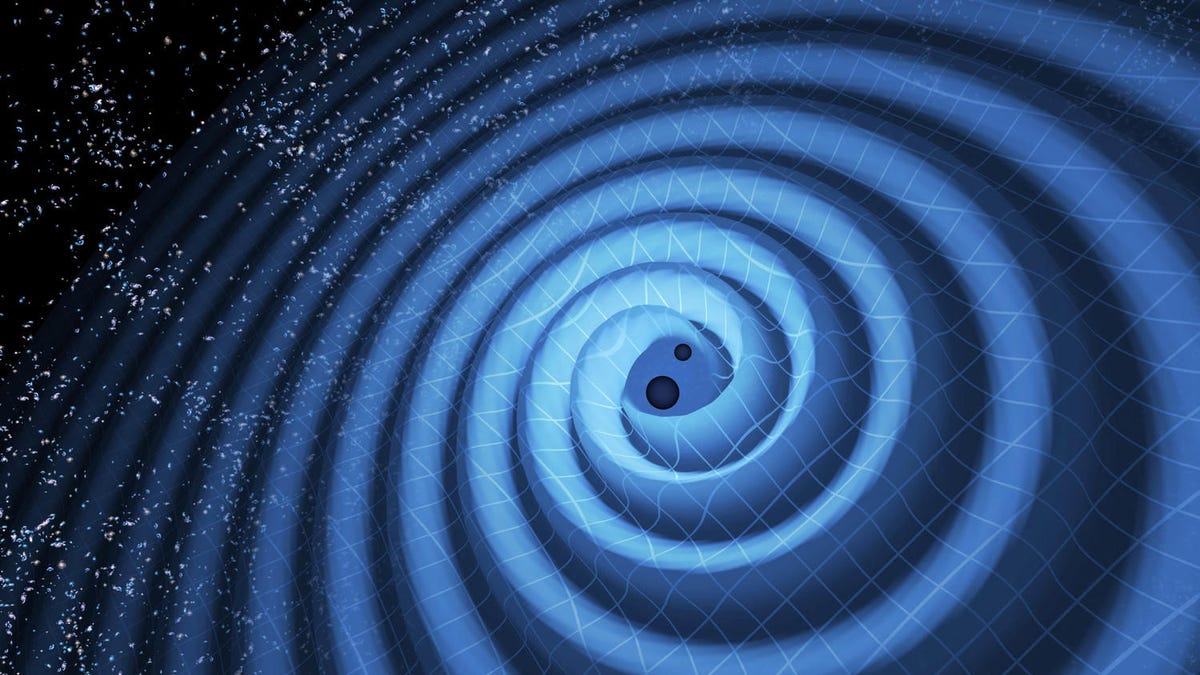Black hole bonanza: Astronomers discover 32 collisions and one mystery merger
Gravitational wave detectors reveal truckload of black holes that smashed into each other in deep space.

Ripples in spacetime.
The LIGO Scientific Collaboration dropped its latest batch of gravitational wave detections on Sunday, and it's a big one. Thirty-five events have been catalogued and, of those, 32 resulted from black hole collisions in deep space. Two others were identified in June as the first neutron star-black hole mergers, and there's one gravitational wave event that's proving to be a bit of a mystery. Seventeen of the events are brand new.
"Only now are we starting to appreciate the wonderful diversity of black holes and neutron stars," said Christopher Berry, a theoretical physicist at the University of Glasgow and member of the collaboration, in a press release. "Our latest results prove that they come in many sizes and combinations -- we have solved some long-standing mysteries, but uncovered some new puzzles too."
When massive, dense objects like black holes and neutron stars circle each other, they send out ripples in spacetime that travel across the universe. As the objects dance, the ripples are pumped out faster and faster. When they wash over the two LIGO detectors in the US and the Virgo detector in Italy, they faintly jiggle some finely tuned lasers -- and astronomers hear a chirp that can reveal the nature of the objects: how massive they are, how they spin and where they might have come from.
The new trove of detections were made between November 2019 and March 2020 by gravitational wave observatories during the second half of the collaboration's third observing run, known as "O3b." They join 55 previously reported detections stretching back to 2015. You can see the full collection of events below.
This handy graphic shows every gravitational wave event detected since 2015.
Detecting black holes colliding with black holes is becoming fairly routine work for astrophysicists, but there is at least one exotic object in the catalog that remains a mystery: GW191219. The collaboration believes this gravitational wave event may have been produced by a neutron star -- a type of dead, zombie star -- crashing into a black hole.
If this is the case, it would be among the least massive neutron stars ever detected, at around 1.2 times more massive than our sun. It's also a little strange because it appears to have merged with a black hole about 33 times more massive than the sun. This huge difference in mass makes it hard to study the object in detail. The team notes in its catalog paper it can only infer the kind of merging object. Further observations of these low-mass objects will be able to clear up the mystery.
The team also point out GW191204, a black hole collision where one half of the binary is spinning weirdly. One of the dance partners appears to be performing pirouettes, but the other seems to be doing backflips.
The next observing run, O4, has been impacted by the pandemic and Hurricane Ida and will not begin until August 2022 at the earliest. The LIGO collaboration will provide a "more concrete plan" by Nov. 15, but it will be quite some time before we begin to hear about the next batch of black hole collisions. Upgrades to the detectors, and the addition of the Japanese KAGRA detector, will allow researchers to more accurately locate the source of gravitational waves -- potentially providing a way to "see" the shock of a black hole collision.

